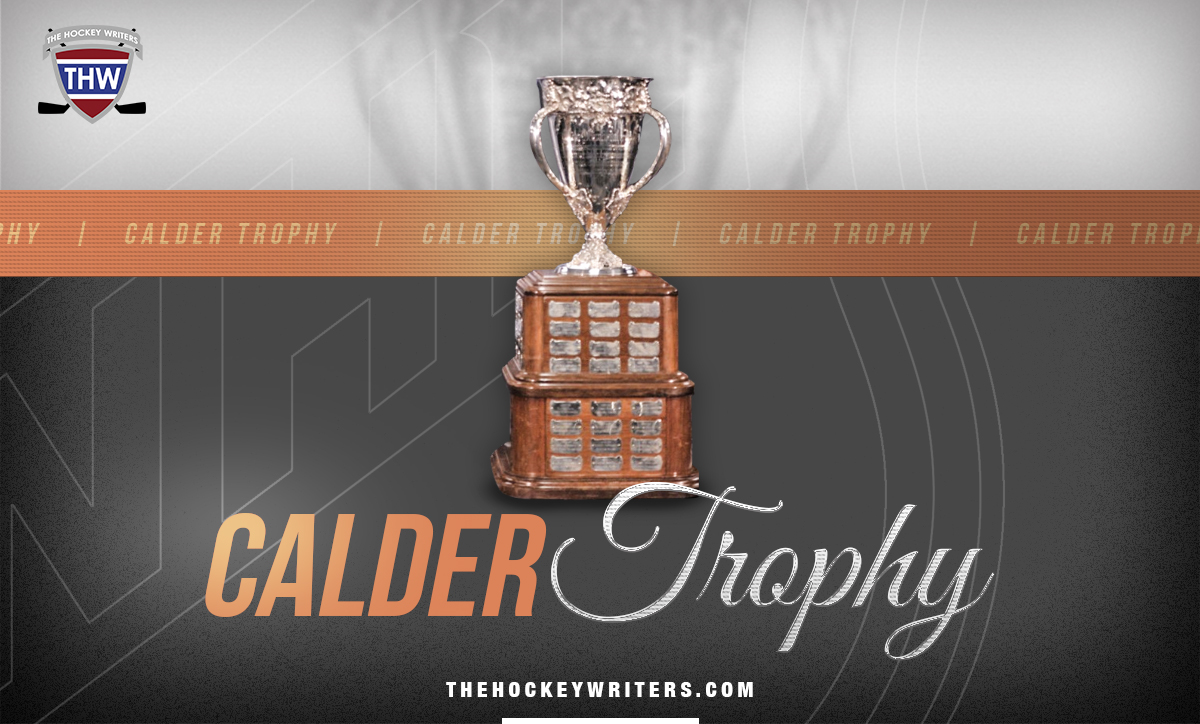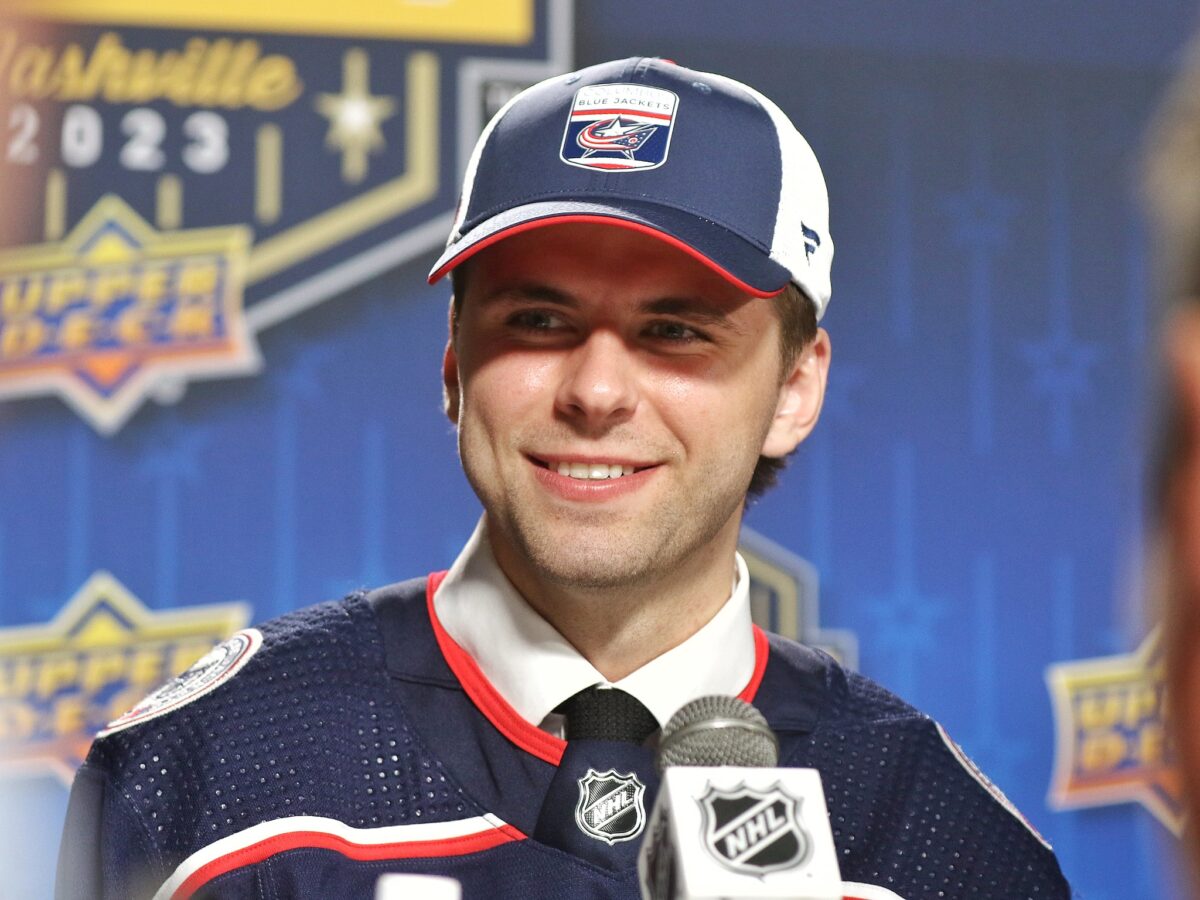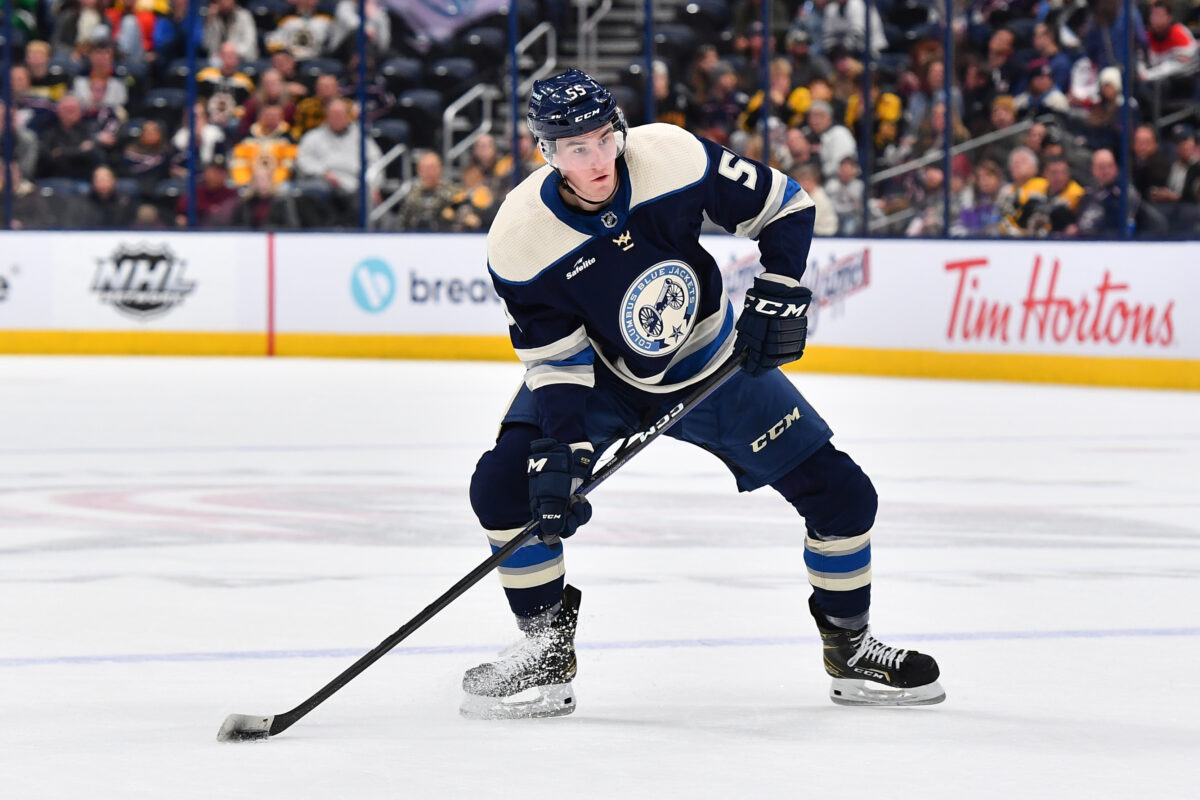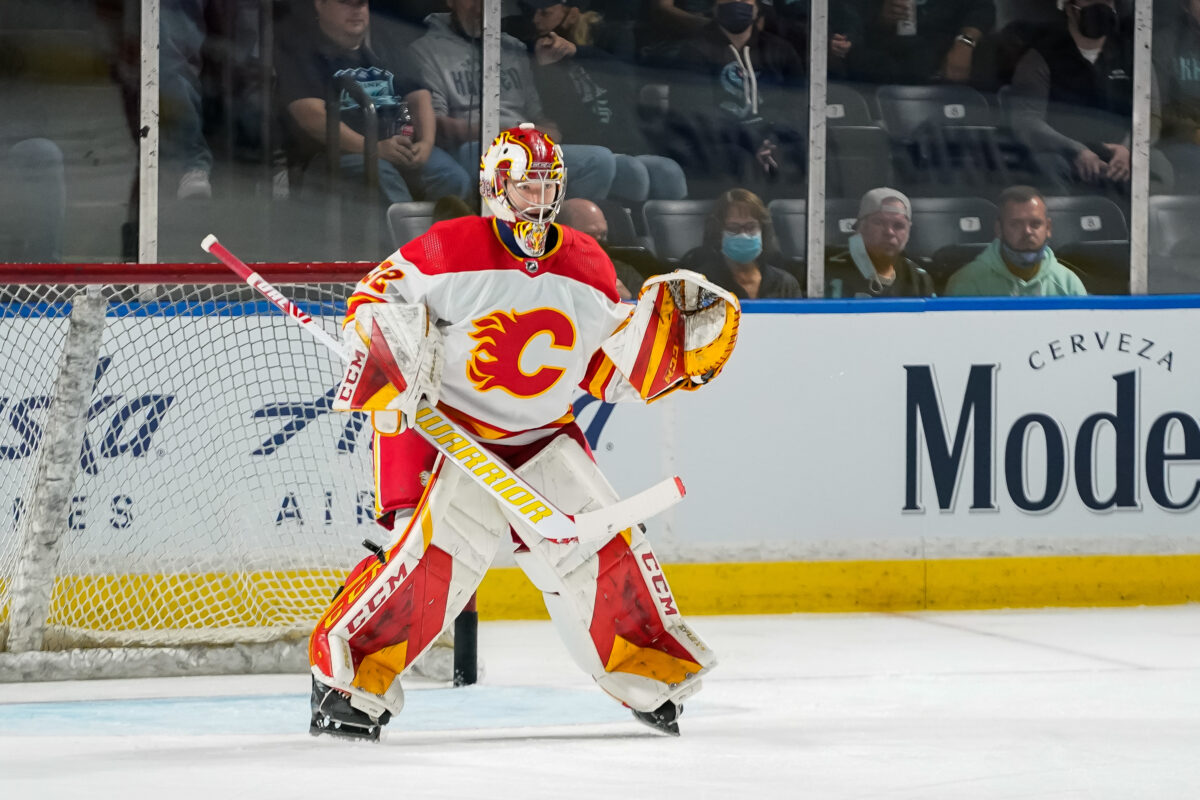The NHL’s Calder Memorial Trophy is given to the league’s best first-year player. Last year’s group of rookie talent wasn’t particularly spectacular or deep, with Matty Beniers all but guaranteed to win the award before the calendar flipped over in January. This year, however, should provide a whole lot more drama with a massive pool of talent making their way into the NHL for the first time at a variety of positions.

Let’s take a deep dive into the top players who could realistically compete for the NHL’s rookie of the year honors next year. I came up with a list of one dozen players who I think have the best chances to end up with a Calder vote or two at the end of next season, and I’ve divided them into three tiers, the early favorites, the realistic contenders, and the dark horses. They are ranked 1-12 with one being my prediction for the 2023-24 Calder Trophy winner.
Without further ado, let’s take a look at the upcoming NHL rookie class!
Early Favorites
1. Connor Bedard, C/W, Chicago Blackhawks
What more is there to say about Connor Bedard at this point? The 2023 first overall pick is the most hyped prospect since Connor McDavid and has the skill and shot to be a game breaking offensive talent. Playing for the Chicago Blackhawks next year will give Bedard an excellent chance to score a ton of points and challenge for the Calder Trophy. Bedard is undoubtedly the absolute favorite to win but there’s lots of hockey to be played before any votes are cast.
Related: The NHL’s Top 100 Prospects – Preseason Edition
Bedard will have every opportunity to grow and score at even strength and on the Blackhawks’ top power play unit. It seems unlikely that he will be asked to do much defensively, as few 18-year-olds truly excel in that part of the game anyway. I think a conservative estimate for Bedard’s point total would be around the 50-60 range, but a Patrick Kane-like rookie year where he scores 70+ points is certainly on the table if he establishes quick chemistry with some linemates like Taylor Hall or Lukas Reichel.
2. Adam Fantilli, C, Columbus Blue Jackets
In a normal draft year, Adam Fantilli would have received a lot more hype as an NHL-ready center who skates incredibly well, and is a dual-threat on offense with either his playmaking or shot. Unfortunately for him, the 2023 Draft was not a normal draft year. Much has been made of the Columbus Blue Jackets’ lack of a true top-line center throughout their franchise’s history, and Fantilli has a very good chance to be just that.

As is the case for nearly every prospect, Fantilli will need to prove that he can handle the responsibility of serious ice-time in the NHL, but I see a very clear path for him to become a top-six center (or even a 1C) in Columbus by the end of the season. Fantilli scored at a higher pace in his NCAA draft year than Jack Eichel did back in 2014-15, and Eichel followed that up with 56 point rookie season. I’ll set 56 points as the baseline for Fantilli but I think 60+ points will be well within reach for him.
3. Logan Cooley, C/W, Arizona Coyotes
Cooley was exceptional in his draft year for the USA U18 team in the National Team Development Program (NTDP), and he carried that momentum into the NCAA last year where he scored a wildly impressive 60 points in 39 games for the University of Minnesota. That’s the kind of stat line that normally guarantees a freshman a few awards and a chance at the Hobey Baker Trophy as college hockey’s best player, but Fantilli burst onto the scene at the same time, stealing much of Cooley’s thunder.
Few prospects in the hockey world are as dynamic offensively as Cooley, and he should become a mainstay in the Coyotes’ top-six forward group by the end of the 2023-24 season. There are lots of offensively gifted wingers on that team as well, so if he sticks down the middle at the NHL level, I expect he’ll at least get some chances as the team’s second-line center sooner than later. While I think something in the 40-point range is more realistic, Cooley has the potential to be a 60+ point guy right out of the gate in my opinion.
4. Devon Levi, G, Buffalo Sabres
Two phenomenal seasons in the NCAA took Devon Levi from unknown seventh round pick to elite goaltending prospect. He looked good in his end-of-year tryout with the Buffalo Sabres, and has the potential to be a lot more than “good” with a bit of patience. The Sabres’ goaltending situation last season was bleak, and if Levi can be good enough that the team’s high-octane offense to carry them into the playoffs at his age, he will have a great chance to at least be a Calder Trophy finalist.
Levi stands at 6-feet tall, which is several inches under what is considered ideal for an NHL goaltender. However, his positioning, skating, and puck tracking are all excellent and give him a real chance to be an excellent starting goalie in the NHL some day. What really stands out to me is how quick his feet are against dekes, giving him a chance to stay with the play even though he doesn’t have the length of a Connor Hellebuyck or an Andrei Vasilevskiy.
Realistic Contenders
5. Lukas Reichel, C, Chicago Blackhawks
Lukas Reichel is someone who is severely underrated and who I think will become a great top-six winger in the NHL very soon. He dominated the AHL last year scoring at a point-per-game rate as a 20-year-old. His ability to persevere on the forecheck makes him a dangerous player in the offensive zone, even when he doesn’t have the puck. Reichel’s speed and skill make him a threat in transition as well where he can dance through defenders like they’re standing still.

Reichel would have improved the Blackhawks’ lineup last year no doubt but that would have damaged their tanking chances so he only played 23 NHL games last year, scoring 15 points. He will likely start the year in the team’s top-six and I wouldn’t be surprised if he reaches the 50-60 point range in the NHL next year.
6. Luke Hughes, LD, New Jersey Devils
Luke Hughes has been one of the most anticipated prospects in the NHL world ever since it became clear that his older brothers Jack and Quinn were both stars in the NHL. Luke has the largest frame of the bunch but still has that Hughes-family skating ability that should make him a special two-way talent. Luke was one of the best defenders in college hockey for both years he spent with the University of Michigan, and seems poised to make an impact on a New Jersey Devils team that looks ready to compete for a championship.
New Jersey’s leap from rebuilder to contender in the 2022-23 season is an absolute blessing for Luke as he’ll be able to slowly work his way up the lineup instead of being thrust into a large role right off the bat. It may not be the best thing in the world for his chances at competing for the rookie of the year honors, but if his two game stint at the end of the regular season last year is anything to go off of, head coach Lindy Ruff clearly won’t be afraid to play him in high-leverage minutes such as the top power play unit and even three-on-three overtime.
7. Matthew Knies, LW, Toronto Maple Leafs
After tearing up college hockey for his first two post-draft seasons, Matthew Knies fit like a glove in the top-six forward group for the Toronto Maple Leafs. Knies’ playstyle makes him a near-perfect Michael Bunting replacement after the feisty winger priced himself out of Toronto as a complementary piece to some of the team’s high end forwards. Knies has a great chance of spending most of his even strength minutes next season with at least one member of the Maple Leafs’ “Big Four”, which automatically means he should be able to realistically reach at least 40 points.
Knies is incredibly competitive and plays a remarkably physical game for a 20-year-old. He will not quit on a play ever, constantly fighting for the puck or for positioning. Knies is a hound out there, constantly driving play in the right direction for his team, making his linemates’ jobs much easier. He will have a little competition in the top-six with the addition of Tyler Bertuzzi in free agency, but there are two spots on the wing in the top-six and I’d feel comfortable betting that Knies will hold one of those spots down for most of the season. If he does, watch out for him when it comes to voting season.
8. David Jiricek, RD, Columbus Blue Jackets
After the Columbus Blue Jackets orchestrated the NHL’s second-ever sign-and-trade, adding Damon Severson from the New Jersey Devils, David Jiricek is, at worst, Columbus’ second best right handed defender next year. Even with Severson on the team, I think there’s a good chance Jiricek is their best by the end of the year. I can see the arguments for stacking the top pairing with Zach Werenski and Jiricek, but I can also see the merit in spreading the depth to give the team at least two solid defensive pairings.

Jiricek likely won’t put up gaudy point totals in his rookie year, but he can be counted on to drive play and produce good two way results, which has helped defenders have a serious Calder case before with guys like Miro Heiskanen. I expect he’ll score at least 20 points next season in a pretty big role, with above average defensive results (for a 19-year-old defender in an NHL top-four). If his offense really pops and he gets serious power play time, I could see Jiricek reaching for a Moritz Seider-like rookie season in the 45-50 point range.
Dark Horse Contenders
9. Zach Benson, C, Buffalo Sabres
Zach Benson is one of the most skilled and creative prospects in the NHL and the only things that could hold him back from being a star in the NHL are his size and his underwhelming speed. I’m not all that worried about either (5-foot-9, 160 pounds) because he has the tenacity and elusiveness that smaller players need to have to make a difference at the NHL level these days. Benson shows off his edgework and hands best while playing through traffic as he just seems to be nearly impossible to nail down and knock off the puck.
Benson has looked incredible in the NHL preseason, even getting a look on Buffalo’s top line with Tage Thompson and Jeff Skinner for a period. His forechecking, excellent motor, and hockey sense have led to a spot on the opening night lineup for a team already flush with talented forwards. If Benson can stick in the NHL this year for more than just a nine game tryout then he will shoot up this list but as of now I’m not sure where he will spend the majority of his time this year.
10. Dustin Wolf, G, Calgary Flames
Over the last two years, Dustin Wolf has had a real case as the best goaltender in the world who wasn’t playing in the NHL. After dominating the WHL for his two post-draft seasons, Wolf has won the award as the best goaltender in the AHL in his only two years in the league, even winning league MVP in the 2022-23 season. Wolf is another 6-feet tall goaltender who excels in all facets of the game except for size.

The reason I have him as a dark horse here and not a favorite is that he doesn’t even have a guaranteed spot as the backup goalie in the NHL for the Calgary Flames next year. I believe he is already better than Dan Vladar but the team hasn’t had any success moving him. Even if Wolf surpasses Vladar in the lineup that only means he’ll be a backup and it’s incredibly tough to win the Calder Trophy with that role, unless Wolf excels to the point that Calgary is given no choice but to play Jakob Markstrom and Wolf as a proper tandem, splitting starts. Wolf has the talent to be a great NHL goalie, but his Calder trophy odds are a long shot for now.
11. Simon Edvinsson, LD, Detroit Red Wings
Simon Edvinsson is someone who I think has a better chance to compete for rookie of the year than most people think. He will begin the season in the AHL, but he spent most of last year in the AHL and his game grew a lot over the course of the year between his NHL pre-season showings and his nine game stint in the NHL near the end of the season. I expect he’ll be the first call up on defense for Detroit and will run with that chance, never being sent back to the AHL for the rest of the season.
Related: Red Wings Prospect Rankings – #1 Simon Edvinsson
At 6-foot-6 he is massive, but he skates like someone four inches shorter. Edvinsson has shown flashes of dynamic offense, especially on the rush, and he adapted well to the pace of North American hockey as the season wore on. He also defends the rush quite well with a massive reach and great feet. Edvinsson could be a sneaky-good player in the NHL next year with one of Justin Holl or Shayne Gostibehere as his defense partner.
12. Joel Hofer, G, St. Louis Blues
Joel Hofer was excellent in the AHL last year, with a .921 save percentage across 47 starts. He clearly won over the Blues’ management as well who didn’t make any moves to fill their NHL backup spot following Thomas Greiss’ retirement. That hole presents the perfect opportunity for Hofer to make his debut as a full-time NHL goaltender this year as the backup to Jordan Binnington. While being a backup goalie doesn’t typically lead to a lot of Calder votes, Hofer could earn more and more starts as the year goes on if Binnington has another up-and-down season.
Calder Trophy Race Shaping Up Well
Now that I’ve laid out my top-12 contenders for next year’s Calder Trophy, I’ve all but guaranteed that someone who didn’t even make this list ends up winning it like William Eklund, Shane Wright, or Simon Nemec. Regardless, I think this will be an incredibly fun rookie class to watch, with many teams across the league having at least one rookie worth watching.
Connor Bedard has a bit of a head start since the award also typically requires the player to have a lot of attention throughout the year and he’s had that in spades for the last 18 months or so. Anyone else will not only have to be better than Bedard, a tough ask in itself, but will need to be better by a wide enough margin to disrupt the pattern of first overall picks being named rookie of the year simply due to the height of expectations and attention.
Who do you think will win the 2023-24 Calder Trophy? Who do you think is the most likely to win it from each of my three tiers? Any other “dark horses” who you think could surprise people and seriously compete? Sound off in the comment section below!
